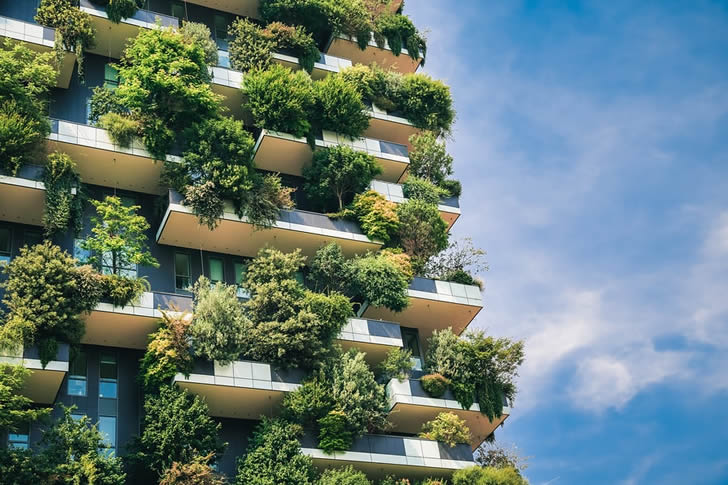Discover the Principles of Sustainable Architecture: Building for a Greener Future
Sustainable architecture is an innovative approach to building design that prioritizes environmental responsibility and energy efficiency. With the urgent need to address climate change and minimize the impact of human activities on the planet, sustainable architecture offers a pathway to a greener future. By integrating sustainable principles into building design, we can create structures that harmonize with the environment and contribute to a more sustainable world. Let’s explore the key principles of sustainable architecture and their role in building for a greener future.

Energy Efficiency:
Energy efficiency is a fundamental principle of sustainable architecture. By designing buildings that minimize energy consumption, we reduce the reliance on fossil fuels and decrease greenhouse gas emissions. Strategies such as incorporating proper insulation, using energy-efficient appliances and lighting, and optimizing passive solar design can significantly reduce energy demands and promote a more sustainable built environment.
Sustainable Materials:
The choice of materials used in construction plays a vital role in sustainable architecture. Opting for environmentally friendly and renewable materials, such as responsibly sourced wood, recycled materials, and low-impact materials, reduces the carbon footprint of buildings. Additionally, using durable materials and designing for adaptability and reuse enables the efficient use of resources and minimizes waste.
Water Conservation:
Water conservation is an integral part of sustainable architecture. Designing buildings with water-efficient fixtures, rainwater harvesting systems, and efficient irrigation systems reduces water consumption and minimizes strain on nearby water resources. Additionally, incorporating water-efficient landscaping and utilizing native plant species can further contribute to sustainable water management.
Passive Design Strategies:
Passive design strategies utilize natural elements and resources to maximize comfort and minimize energy consumption. Designing buildings with proper orientation to optimize natural light, ventilation, and solar heat gain can reduce the need for artificial lighting and heating or cooling systems. Incorporating features like shading devices, green roofs, and natural ventilation systems enhances the efficiency and sustainability of buildings.
Waste Reduction and Recycling:
Sustainable architecture aims to minimize waste generation and promote recycling. Designing buildings with efficient waste management systems, incorporating recycling facilities, and utilizing construction techniques that reduce waste can significantly reduce the environmental impact of the construction industry. Additionally, considering the life cycle of materials and designing for disassembly and reuse can further promote a circular economy within the building sector.
Biodiversity and Ecological Integration:
Sustainable architecture emphasizes the integration of buildings with the surrounding ecosystem. By incorporating green spaces, urban gardens, and wildlife habitats into building design, we can promote biodiversity and create healtauf dieser Seite, more livable environments. Additionally, implementing strategies to mitigate the urban heat island effect and preserve natural habitats within urban areas contribute to a more sustainable and ecologically balanced built environment.
Community Engagement and Well-being:
Sustainable architecture extends beyond the building itself and considers the well-being of the surrounding community. Designing buildings that foster social interaction, promote walkability, and provide access to public transportation and amenities can contribute to vibrant, sustainable communities. Additionally, incorporating elements such as natural daylight, indoor air quality management, and biophilic design principles enhances occupant health, comfort, and overall well-being.
In conclusion, sustainable architecture offers a roadmap for building a greener future. By embracing energy efficiency, sustainable materials, water conservation, passive design strategies, waste reduction, biodiversity, and community engagement, we can create buildings that minimize their environmental impact and contribute to a more sustainable world. Sustainable architecture is not just a trend; it is a crucial step towards addressing climate change, promoting resource efficiency, and creating resilient and livable communities for generations to come.







Recent Comments